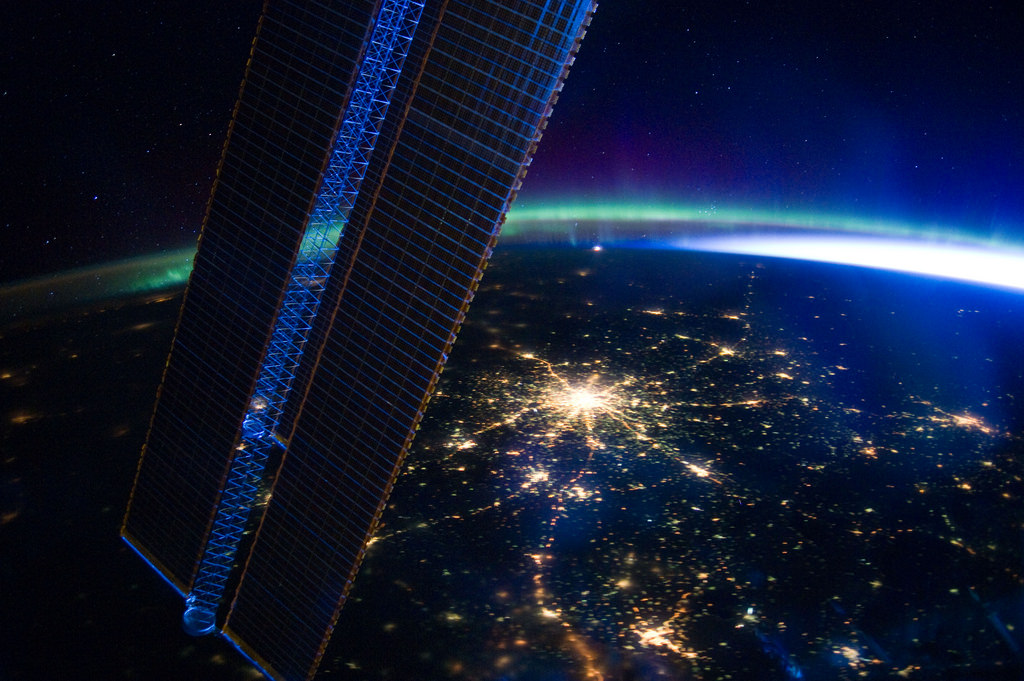[/caption]
In many of the photos that we have featured recently from astronauts aboard the International Space Station, a glowing greenish-yellow band can be seen just above Earth’s limb. I’ve been asked before what this is, so I thought I’d explain it here. This is a phenomenon known as “airglow”.
A photochemical reaction that occurs high in the atmosphere, airglow is the result of various atoms, molecules and ions that get excited (chemistry-excited, that is… not “whee!”-excited) by ultraviolet radiation from the Sun and then release that energy as visible – as well as infrared – light when they return to their “normal” state. It’s not entirely unlike glow-in-the-dark toys or paint!
This light is most visible to the crew of the ISS when it is orbiting over the night side of the planet, and thus is seen in images like the one above. It appears like a thin band because viewing the atmosphere at a shallow angle – rather than directly down through it – increases the airglow layer’s relative visibility.
Most of visible airglow comes from oxygen atoms and molecules, which glow green… as commonly seen in the aurora. Other contributing elements include sodium and nitrogen. While present in the atmosphere at all layers, the region that glows visibly is typically constrained to a narrow band 85 – 95km (53-60 miles) high. The band itself is usually about 6 – 10km (4-6 miles) wide. The reason for this is that below those heights the atoms and molecules are more concentrated and collide more readily, releasing their energy sooner, and above it the density of the atoms is too low to do much colliding at all (to put it very simply.)
There are a lot of other factors involved with airglow as well, such as temperature and altitude, as well as different kinds of airglow depending on when in the day they occur. Nightglow is not exactly the same as dayglow, and then there’s even twilightglow… one could say there’s a lot glowing on in the upper atmosphere!
I’m here all week, folks.
You can read more about airglow in this informative article by the Institute of Astronomy and Astrophysics (Instituto de Astronomía y Física del Espacio) in Buenos Aires. Image credit: NASA.


